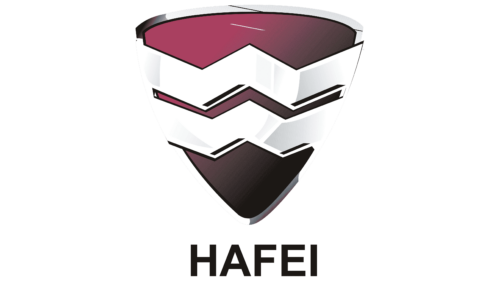The Hafei logo resembles a warm heart with strong metal. The emblem signifies protection, a deep understanding of customer needs, and successful collaboration with a partner to create comfortable cars. The logo represents vehicles made with passion.
Hafei: Brand overview
Established in 1980, Hafei carved its niche as an offspring of the government-backed Chang’an Automobile Group, anchoring its operations in Harbin, located within the Heilongjiang province. Initially, Hafei’s automotive prowess was evident in its lineup of mini trucks and vans tailored for commercial use. As the 1990s dawned, they broadened their horizons, venturing into the realm of passenger vehicles. Some notable names from this era include the Saibao, Bova, and Lobo compact sedans.
2003 saw a strategic alliance between Hafei and Suzuki, where they collaboratively worked on cars influenced by Suzuki’s design and technology, tailoring them for Chinese consumers. This partnership enabled Hafei to infuse advanced technology and superior quality into their offerings.
A few years later, in 2006, Hafei was merged into its parent entity, Chang’an Automobile Group. Yet, it retained a semblance of autonomy, focusing primarily on budget-friendly cars, with models like Saili and Noba gaining prominence. However, the landscape shifted once more in 2009. Chang’an Automobile’s fresh collaboration with Ford led to the inception of Changan Ford, and Hafei transitioned to a wholly-owned subsidiary under this new venture.
Under this new umbrella, Hafei underwent a transformative phase, pivoting away from its original brand vehicles and diving into producing Ford models tailored for Chinese consumers. Cars like the Ford Focus and Ford Mondeo rolled off the Hafei assembly lines. But by 2015, the winds of change blew once more. Changan Ford opted to cease production activities at the traditional Hafei facility, integrating its functions within broader Changan Ford operations. This maneuver marked the culmination of Hafei’s distinct identity, wrapping up its 35-year-long journey.
Meaning and History
What is Hafei?
Initiated as a segment of the Chang’an Automobile Group in 1980, Hafei Motor Co., Ltd. has built its reputation as a top-rated Chinese carmaker, focusing on passenger cars. The company was incorporated into the Changan Ford Group in 2015, fortifying its stature in the automobile sector. With its operational base nestled in the dynamic city of Harbin, Heilongjiang, China, Hafei Motor Co., Ltd. shines as an authority in the Chinese car industry.
1980 – 2015
The Hafei emblem, used from 1980 to 2015, features a shield shaped like a heart, symbolizing the engine driving the company’s vehicles. The gradient inside the shield represents the transition from the fire burning within to a strong, tempered material, emphasizing the power and reliability of Hafei engines.
The heart has metallic edge gives the emblem additional strength and a modern look. Two wavy lines with sharp peaks run across the front of the shield, resembling a cardiogram. These lines symbolize the vitality and energy that Hafei puts into its vehicles.
The number 2 on the emblem has multiple meanings. It signifies the partnership with Suzuki, whose vehicles Hafei adapts for the Chinese market. This partnership is crucial in expanding the company’s range and improving product quality. The number 2 indicates Hafei’s two main areas of activity: the production of trucks and passenger cars.




